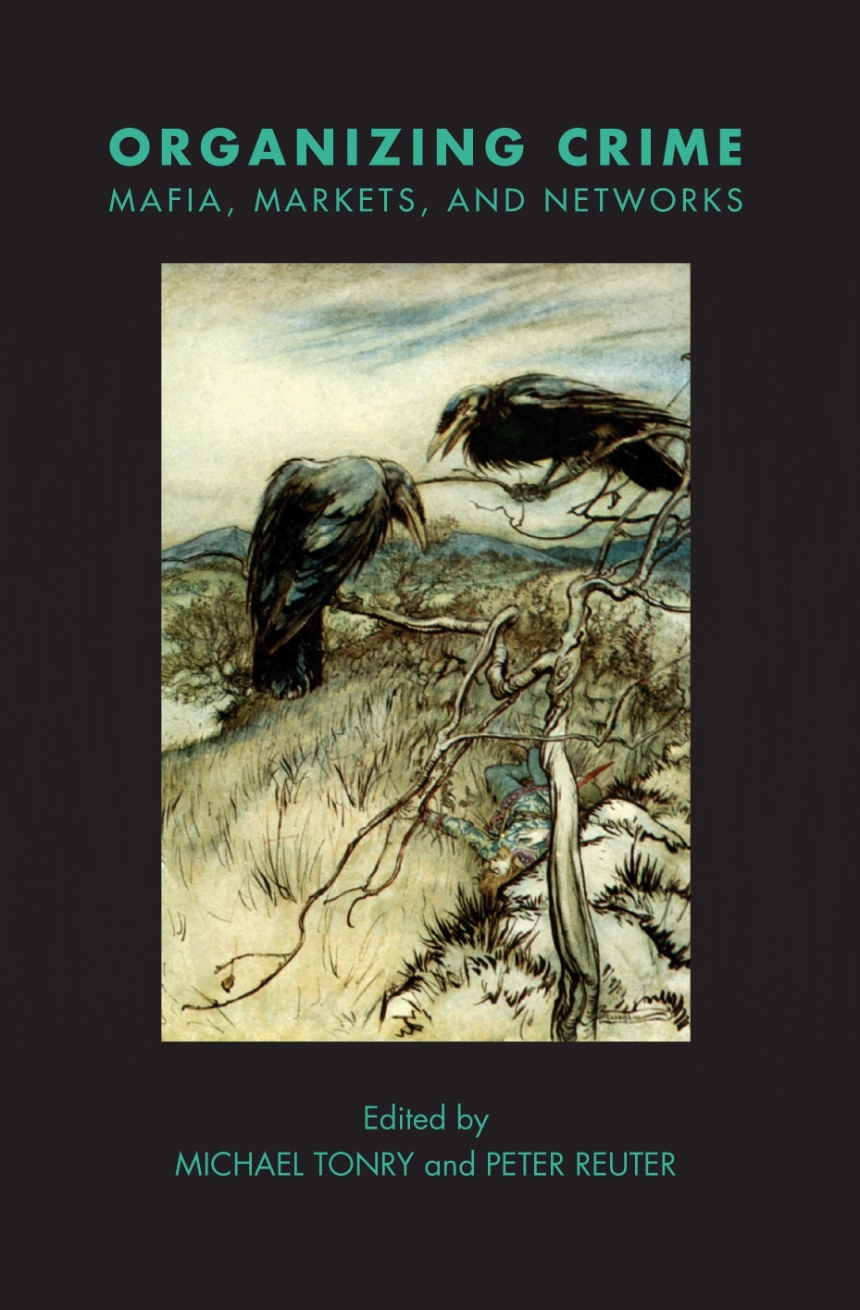Crime and Justice, Volume 49
Organizing Crime: Mafias, Markets, and Networks
Crime and Justice, Volume 49
Organizing Crime: Mafias, Markets, and Networks
For most Americans, The Godfather, The Sopranos, and the Cosa Nostra exemplify organized crime. In Asia the term conjures up images of Japanese yakuza and Chinese triads, in Italy the Cosa Nostra and ‘Ndrangheta, in Latin America Mexican narco-gangs and Colombian drug cartels, in the Netherlands transnational drug and human trafficking, and in Scandinavia outlaw motorcycle gangs. Some but not all those organizations are “mafias” with centuries-long histories, distinctive cultures, and complicated relationships with local communities and governments. Others are new, large but transitory and with no purpose other than maximizing profits from illegal markets.
Organized crime organizations have existed for centuries. Serious scholarly, as opposed to journalistic or law enforcement, efforts to understand them, however, date back only a few decades. Authoritative overviews were, until very recently, impossible. Rigorous, analytically acute, and methodologically sophisticated literatures did not exist. They have begun to emerge. They have developed in many countries, involve work in different languages and disciplines, and deploy a wide range of methods.
Organizing Crime: Mafias, Markets, and Networks provides the most exhaustive overview ever published of knowledge about organized crime. It provides intensive accounts of American, Italian, and Dutch developments, covers both national mafias and transnational criminality, and delves in depth into gender, human capital, and money laundering issues. The writers are based in seven countries. To a person they are, or are among, the world’s most distinguished specialists in their subjects. At last, credible explanations and testable hypotheses are available concerning when, why, and under what circumstances mafias and other organized crime organizations come into being, what makes them distinctive, what they do and with what effects, and how to contain them.
512 pages | 6 x 9 | © 2020
Crime and Justice: A Review of Research
Law and Legal Studies: Law and Society
Political Science: Public Policy
Sociology: Criminology, Delinquency, Social Control, General Sociology
Table of Contents
Peter Reuter and Michael Tonry
The Rise and Fall of Organized Crime in the United States
James B. Jacobs
Italian Organized Crime since 1950
Maurizio Catino
What Makes Mafias Different?
Letizia Paoli
How Similar Are Modern Criminal Syndicates to Traditional Mafias?
Peter Reuter and Letizia Paoli
How Mafias Migrate: Transplantation, Functional Diversification, and Separation
Federico Varese
Women in Organized Crime
Rossella Selmini
Organized Crime and Criminal Careers
Edward Kleemans and Vere van Koppen
Collaboration and Boundaries in Organized Crime: A Network Perspective
Martin Bouchard
Human Smuggling: Structure and Mechanisms
Paolo Campana
Outlaw Motorcycle Clubs and Organized Crime
Klaus von Lampe and Arjan Blokland
Understanding the Laundering of Organized Crime Money
Mike Levi and Melvin Soudijn
